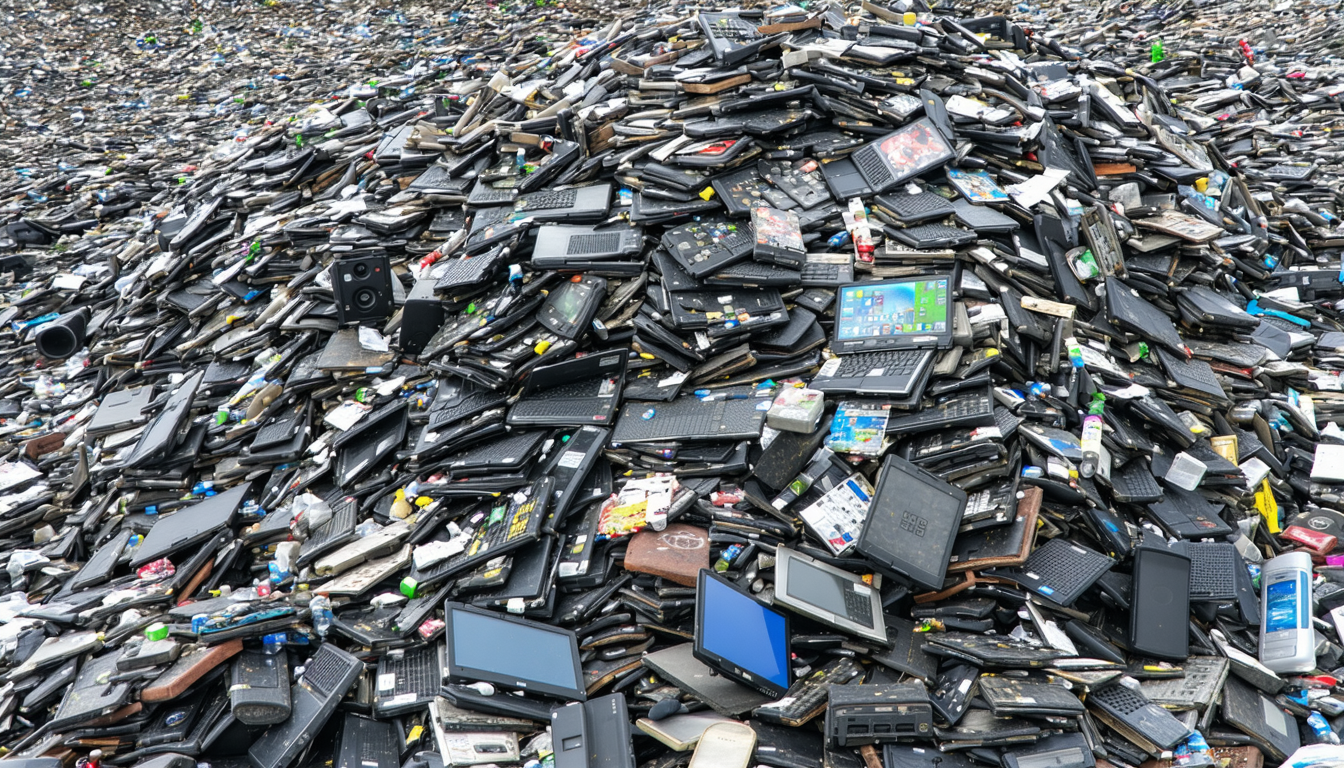The electronic waste (e-waste) auction market in the United States is witnessing a significant surge as businesses and government entities seek sustainable ways to manage discarded electronics. With millions of tons of e-waste generated annually, auctions have emerged as a viable solution to recycle, repurpose, and resell obsolete devices. This article explores the latest trends in the U.S. e-waste auction landscape, their economic and environmental impact, and what the future holds for this growing industry. From recent data to expert insights, we uncover why these auctions are becoming a cornerstone of e-waste management.
The Rise of E-Waste Auctions in the United States
E-waste auctions involve the sale of discarded electronic equipment—such as computers, smartphones, and servers—to buyers who refurbish, recycle, or extract valuable materials. In the U.S., the Environmental Protection Agency (EPA) estimates that over 2.7 million tons of e-waste were generated in 2022 alone, with only about 25% being recycled. Auctions provide an efficient channel to divert electronics from landfills while creating revenue streams for organizations.
These events are often hosted by specialized firms or online platforms like GovDeals and Liquidation.com, which cater to both public and private sectors. The growing participation of small businesses and individual buyers highlights the increasing demand for affordable tech and raw materials.
Economic and Environmental Impact of E-Waste Auction
E-waste auctions are not just about clearing clutter; they play a crucial role in the circular economy. By facilitating the reuse of electronics, these auctions reduce the need for new production, conserving resources like rare earth metals. According to a 2023 report by the Institute of Scrap Recycling Industries (ISRI), the e-waste recycling sector contributed over $7 billion to the U.S. economy last year.
On the environmental front, proper e-waste management prevents hazardous substances like lead and mercury from contaminating soil and water. “Auctions are a game-changer in reducing landfill waste and promoting sustainable practices,” says Dr. Emily Carter, an environmental scientist at Stanford University. Her statement underscores the dual benefits of these initiatives.
Key Stakeholders and Their Roles
Several groups are driving the success of e-waste auctions in the U.S., each with distinct motivations:
- Government Agencies: Federal and state bodies auction surplus or outdated equipment to cut costs and comply with recycling mandates.
- Corporations: Large companies use auctions to dispose of bulk electronics responsibly while recovering some financial value.
- Recyclers and Refurbishers: These buyers acquire devices for parts, repairs, or material extraction, feeding into secondary markets.
- Consumers: Individuals benefit from access to low-cost technology through refurbished goods sold post-auction.
This ecosystem ensures that e-waste is handled efficiently, with benefits rippling across multiple sectors. However, challenges like ensuring data security during device transfers remain a concern for sellers.
Challenges and Opportunities in E-Waste Auction Practices
While e-waste auctions offer immense potential, they are not without hurdles. Data privacy is a significant issue, as improperly wiped devices can expose sensitive information. Additionally, not all auctioned items find buyers, leaving some waste unprocessed.
On the flip side, technological advancements are creating opportunities. Blockchain-based tracking systems are being tested to ensure transparency in e-waste disposal chains. “Innovation will be key to scaling up the impact of e-waste auctions,” notes Mark Thompson, CEO of GreenTech Solutions, a leading recycling firm.
Future Outlook for E-Waste Management
Looking ahead, the U.S. e-waste auction market is poised for growth as awareness of sustainability increases. Legislative efforts, such as proposed federal e-waste recycling laws in 2023, could further incentivize participation. Industry experts predict that by 2025, online auction platforms may handle up to 40% of all e-waste transactions in the country.
The balance between profitability and environmental responsibility will shape future trends. As more stakeholders join the fray, collaboration between policymakers, businesses, and technology providers will be essential to address lingering challenges.
In conclusion, e-waste auctions are transforming how the United States handles electronic waste, offering a sustainable path forward. They bridge economic gains with environmental stewardship, benefiting diverse stakeholders. As this market evolves, it holds the promise of reducing landfill burdens while fostering innovation in waste management.
Frequently Asked Questions (FAQs)
What is an e-waste auction?
An e-waste auction is a process where discarded electronic devices are sold to buyers for recycling, refurbishment, or material recovery, often through online platforms or live events.
Why are e-waste auctions important in the U.S.?
They help manage the millions of tons of electronic waste generated annually, reduce landfill use, conserve resources, and contribute to the economy by creating secondary markets.
Who participates in e-waste auctions?
Participants include government agencies, corporations, recyclers, refurbishers, and individual consumers looking for affordable technology or raw materials.
What challenges do e-waste auctions face?
Key issues include ensuring data security on sold devices and finding buyers for all auctioned items, which can lead to unprocessed waste.
How can I participate in an e-waste auction?
Interested individuals or businesses can register on platforms like GovDeals or Liquidation.com, review listings, and bid on available lots of electronic waste.

